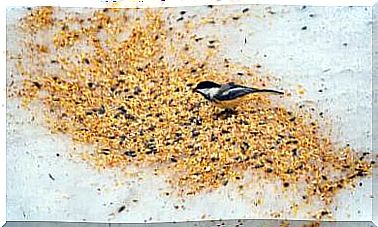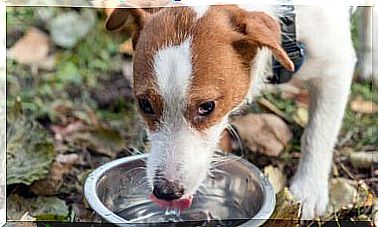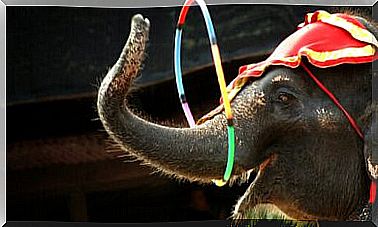Intensive Care For Birds Of Prey
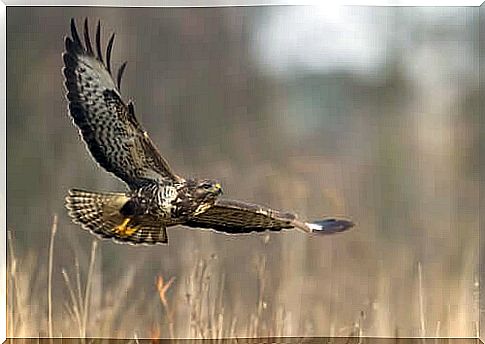
When a bird of prey arrives at a veterinary center, it is first necessary to discover its origin (if it is a wild individual or if, on the contrary, it came from a falconry or environmental education center), as well as the characteristics of its possible disease and the recovery prognosis. Once the first contact ends, you need to proceed with intensive care for birds of prey.
Intensive care for birds of prey
Management, containment and hospitalization
The defense mechanisms of birds of prey vary according to species and size. Most have formidable claws, perhaps with the exception of falconiformes, which use their beaks more when they are uncomfortable with handling.
In any case, when capturing and inspecting them on arrival, it is necessary to ensure both the protection of the veterinarian and the integrity of the animal. It is necessary to pay special attention not to damage the plumage, as they are birds that need their ability to fly intact, and not to cause fractures or injuries due to malpractice, not to mention the stress that human contact generates on the bird.
Generally, using towels or blankets to wrap the animal reduces the danger when handling it. Furthermore, if we also cover its eyes, either with its own blanket or with a hood, the bird will be calmer and less stressed.
During hospitalization, it is necessary to maintain hygienic and biosafety conditions to avoid infections. During this period, contact with humans or other animals should be as little as possible, especially in the case of young birds that may have imprinting as a result.

Physical examination and screening
Generally, the bird of prey is captured in a suitable container and transported to the recovery center. Once in place, before removing it from the aforementioned container, it is advisable to inspect it visually, as it is already possible to obtain a lot of information.
It is necessary to observe if there is excessive effort when breathing, if there is detachment of the wing, if the head is tilted… At this moment, situations that need urgent treatment can be detected.
Once at the clinic, it will be necessary to weigh the animal to administer any medications. Depending on the size of the bird, it is possible to place it on the scale simply wrapped in a cloth, or it will be necessary to weigh it inside the container in which it was transported.
When placing the bird on the inspection table, it is decided to leave it on its back, unless there is some severe respiratory difficulty. In this case, it must be kept upright, contained by an assistant.
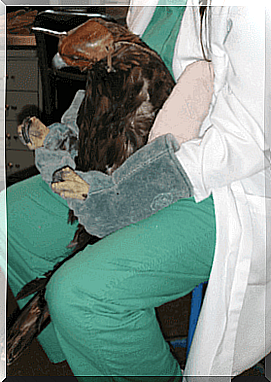
Intensive care for birds of prey: recovery
Once the bird of prey is stabilized and out of immediate danger, it should be transferred to a rehabilitation facility where it has perches and surfaces adapted to its size and species.
complications
One of the most common complications of keeping birds recovering for long periods is the appearance of pododermatitis, also known as ‘ bumblefoot ‘. These are plantar lesions that appear when support surfaces are not adequate. It can even cause necrosis of the distal part of the paw and amputations, thus preventing further release of the bird.
Another complication is damage to the feathers, especially the helms, located on the tail. To prevent this from happening, during hospitalization they can be covered with radiographic paper, forming a kind of rigid envelope to keep them isolated.





